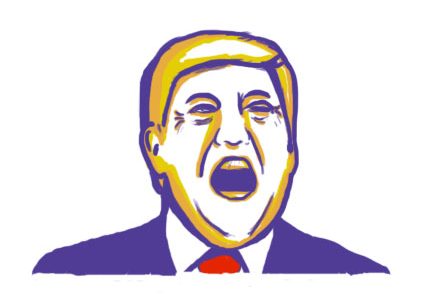Trump’s Impeachment
Exploring the investigations surrounding Trump

The movement to impeach President Donald Trump gained traction after an anonymous White House official reported that Trump had abused his presidential powers to benefit his 2020 presidential campaign.
December 11, 2019
The movement to impeach President Donald Trump gained traction after an anonymous White House official reported that Trump had abused his presidential powers to benefit his 2020 presidential campaign, referred to as the whistleblower complaint.
The procedure for an impeachment first calls for an investigation from Congress, followed by a formal impeachment by the House of Representatives who vote on the articles of impeachment, which detail the charges brought against the President. The Senate then tries the President, who is removed from office if a two-thirds supermajority of the Senators present during the vote are in favor of removal.
As of publication on Dec. 11, 2019, the House Democrats plan to draft the articles of impeachment. Although Trump’s impeachment remains ongoing, the effort to impeach Trump has far-reaching consequences: it widens the divide between Democrats and Republicans, brings the Trump administration’s dealings into the spotlight and cements the impeachment as one of the topics of the 2020 presidential election.
1: Speaker of the House Nancy Pelosi announced on Sept. 24 that six committees of the House of Representatives would conduct a formal impeachment inquiry because of a whistleblower complaint. On Sept. 26, the House Intelligence Committee released a declassified version of the complaint, which detailed a July 25 call between Trump and Ukraine President Volodymyr Zelensky. During the call, Trump pressured Zelensky by withholding military aid to investigate Joe Biden and his son Hunter over Hunter’s business dealings in Ukraine and to release evidence of Ukrainian interference in the 2016 U.S. election.
2: On Nov. 13, Deputy Assistant Secretary George Kent began the Democrats’ public hearings, saying that Rudy Giuliani, Trump’s personal lawyer, led efforts that aimed to pressure Zelensky to open investigations on the Bidens; Kent reported that Zelensky also conducted a smear campaign seeking to discredit the reputation of the former U.S. ambassador to Ukraine, Marie Yovanovitch, which led to her removal. On Nov. 20, Gordon Sondland, the U.S. ambassador to the European Union, testified that Ukraine agreed to open the investigations in exchange for a White House meeting between Trump and Zelensky.
3: On Dec. 2, the House Republicans released a report on the impeachment inquiry which denies the complaints’ claim that Trump pressured Zelensky to investigate the Bidens and that Giuliani led an effort to contradict U.S. foreign policy. It notes that the whistleblower had no firsthand knowledge of the July 25 call and cites Trump’s constitutional authority to remove Yovanovitch. The report reiterates the claim that Ukrainian officials tried to interfere in the 2016 U.S. presidential election. The report contends that the Democrats’ impeachment inquiry is biased and unfair.
4: The House Judiciary Committee conducted a hearing on Dec. 4 to decide on the contents of the articles of impeachment. In the hearing, Judiciary Committee Chairman Jerrold Nadler suggested that the articles could include the instances of obstruction of justice in the Mueller investigation. The Republicans’ witness, George Washington University Law Professor Jonathan Turley, argued that although the investigation into Trump’s involvement in Ukraine is valid, there is not enough evidence for an impeachment. He said that the impeachment is going too quickly.



























































